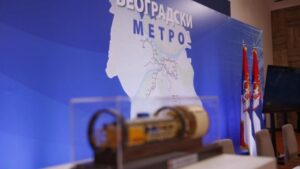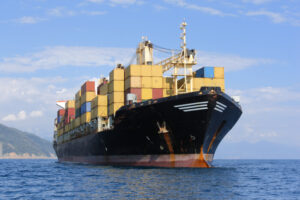Export changes in % to previous period in 2023-2024

Open4Business.com.ua

Kernel Holding S.A. (Luxembourg), the holding company of one of the largest Ukrainian agricultural holdings, has refused to pay dividends for the 2024 fiscal year (FY, July 2023-June 2024) and will direct the received unconsolidated profit of $53.05 mln to reserves. As stated in the company’s announcement on the Warsaw Stock Exchange, such a decision was made by the shareholders’ meeting on December 10, at which the owner of 94.37% of the company’s shares Namsen Limited of the head of the board of directors and majority shareholder Andrew Werewski had 99.63% of the votes.
It is specified that 276 million 915.05 thousand votes were cast in favor of the decision, while against – 1 million 025.92 thousand. The meeting also approved the consolidated financial report of Kernel with a net profit of $167.95 million, which is 44% worse than 2023FY. The shareholders also confirmed PwC Société cooperative as independent auditor for the new fiscal year.
As reported, the agroholding’s revenue for the past FY grew by 4% to $3.581 bln, while EBITDA declined by 30% to $381 mln.
Kernel Agroholding is the world’s largest exporter of sunflower oil and one of the largest producers and sellers of bottled oil in Ukraine. In addition, it is engaged in the cultivation of agricultural products and their realization. Kernel’s net profit for 2023FY amounted to $299 mln, while the previous year the company finished with a net loss of $41 mln. The company’s revenue for 2023FY decreased by 35% to $3.455 bln, but EBITDA increased 2.5 times to $544 mln. Currently, Kernel’s shares are listed on the Warsaw Stock Exchange at the rate of 12.82 PLN (about $3.15) per unit.

Eurohold Bulgaria, represented in Ukraine by two insurance companies – “Euroins Ukraine” and “European Travel Insurance” – in January-September 2024 received a gross profit of EUR181.74 mln, which is 0.8% more than in the same period a year earlier. As reported in the information of IC “Euroins Ukraine” profit before interest taxes and amortization (EBITDA) amounted to EUR122.77 million, which is 36.6% higher than in the same period of 2023. The net financial result for the reporting period amounted to EUR16.21m. The group’s consolidated revenue amounted to around EUR1.02bn.
Eurohold’s insurance business, carried out through Euroins Insurance Group AD (EIG), showed growth and improved profitability. In the first nine months of this year, the group’s insurance revenues grew by 4% year-on-year to EUR198m, while EBITDA and the final financial result amounted to EUR8.44m and EUR1.87m.
“The segments and markets where we are active face challenges, but our results show that we are capable of overcoming them. I believe that we will conclude this year successfully, creating additional value for our shareholders and all our stakeholders,” said Eurohold CEO Assen Minchev,.
Eurohold Bulgaria is a leading energy and financial group operating in Central, Eastern and Southeastern Europe. It is listed on the Bulgarian and Warsaw Stock Exchanges.
Eurohold owns Euroinsurance Group (EIG), one of the largest insurance groups in the region. EIG provides a full range of insurance products, serves more than 4 million clients in 11 countries and employs more than 3000 people.
IC “Euroins Ukraine” is a universal non-life insurer, operating in the Ukrainian market since 1992. The company has about 100 representative offices all over the country, holds 25 licenses, 16 of them – for voluntary and 9 – for compulsory types of insurance.
IC “European Travel Insurance” has been working in the Ukrainian market since 2006 and is the only insurer in Ukraine, which specializes in travel insurance.
The company holds 8 licenses for voluntary types of insurance, works with both private individuals and corporate clients.

Representatives of the Government of Serbia, the City of Belgrade and PowerChina today signed an agreement for the construction of the first phase of the Belgrade Metro Line 1 worth EUR 720 million.
The agreement for Lot 2 of the first phase of Line 1 of the Belgrade Metro covers the design and execution of works, including preparatory activities and the procurement of TBM machines for tunneling.
The preparatory and construction work is expected to last 45 months plus two years.
The document was signed in the Serbian government building by Minister of Public Investment Darko Glisic, Acting Minister of Construction, Transport and Infrastructure; Acting Deputy Head of the Belgrade City Administration – Secretary of the Public Transport Secretariat Radovan Kremić; Director of the Belgrade Metro and Train Company Andrej Mladenović, together with a representative of the Chinese company Power China Han Jiping.
As noted, the new agreement makes it possible to allocate a separate Lot 2, which will be financed from the Serbian budget and will enter into force immediately, which will facilitate the faster implementation of the construction of the first phase of Line 1 of the Belgrade Metro.

In January-November 2024, 73.4 million tons of cargo were exported through the Ukrainian Sea Corridor, Deputy Minister of Community Development, Territories and Infrastructure Timur Tkachenko said on Facebook on Wednesday.
According to him, the volume of exports since the start of the sea corridor in September 2023 has reached 85 million tons.
In addition, the total volume of cargo handled in Ukrainian ports in January-November reached 91.1 million tons, compared to 52.8 million tons in the same period in 2023.
Grain crops remain the leaders in terms of transshipment volumes: 56.1 million tons were handled in 11 months, which is significantly higher than last year’s figure of 39.4 million tons. The volume of ore cargo increased to 16.7 million tons, up from 3.2 million tons in 2023.
In November, Ukraine’s seaports handled 7.6 million tons of cargo, up from 6.7 million tons last year.
“Ukrainian seaports remain key points in international logistics, proving their ability to adapt to challenges and ensure stability even in the most difficult conditions,” Tkachenko wrote, noting that thanks to well-coordinated work, international support and the Armed Forces of Ukraine, Ukraine continues to maintain its position in the global transportation market and confirm its status as a reliable partner.
Earlier, the Ukrainian Sea Ports Authority reported that the cargo turnover of Ukrainian ports from January 1 to November 17, 2024 increased to 86.8 million tons, of which 53.5 million tons were grain cargo.
In addition, it was reported that during the first year of operation of the Ukrainian Sea Corridor, 64.4 million tons of cargo were transported, including 43.5 million tons of grain. During this period, 2379 vessels used the corridor, exporting products to 46 countries.

Germany’s economy shows no signs of recovery: The country’s GDP will decline again in 2024, and stagnation is expected in 2025, according to a review by the Kiel Institute for the World Economy (IfW).
Experts expect Germany’s GDP to decline by 0.2% this year. The decline will be marked for the second year in a row – in 2023, the German economy shrank by 0.3%. In 2025, Germany’s GDP growth will be zero, analysts predict.
The autumn forecast predicted that the country’s GDP would decline by 0.1% in 2024 and grow by 0.5% in 2025.
The main reasons for the deterioration of the forecasts are the expected introduction of US tariffs and the deepening crisis in the German industry, IfW experts say.
“The crisis is largely a crisis of the manufacturing sector,” said Stefan Koots, head of the IfW’s economic forecasting department. – “It shows symptoms typical of the periods following major macro shocks.
“The German economy is struggling with a decline in competitiveness, which is reflected in the weakness of overall economic indicators, which hardly allow us to count on any upward impulses,” the expert added.
The growth rate of consumer prices in Germany will reach the European Central Bank’s (ECB) target of 2% only by the end of 2026, not 2025, as expected in the Institute’s previous forecast. The average inflation rate in 2024 and 2025 will be 2.2%, according to IfW.
Unemployment in Germany will be at 6% this year and 6.3% in 2025 and 2026, according to the IfW. This is worse than the fall forecast of 6.1% for 2025 and 5.9% for 2026.
Experts assume that Germany will be able to reduce the budget deficit from 2.6% of GDP in 2023 to 2.3% this year and 1.9% in 2025. In 2026, the budget deficit is projected at 2.1% of GDP. In the fall, IfW expected the budget deficit to be 1.7% in 2025 and 2026.
You can learn more about current trends in the global economy in the video analysis by Maksym Urakin and the Experts Cub think tank on the Experts Club YouTube channel: https://www.youtube.com/watch?v=grE5wjPaItI